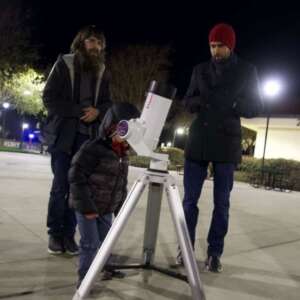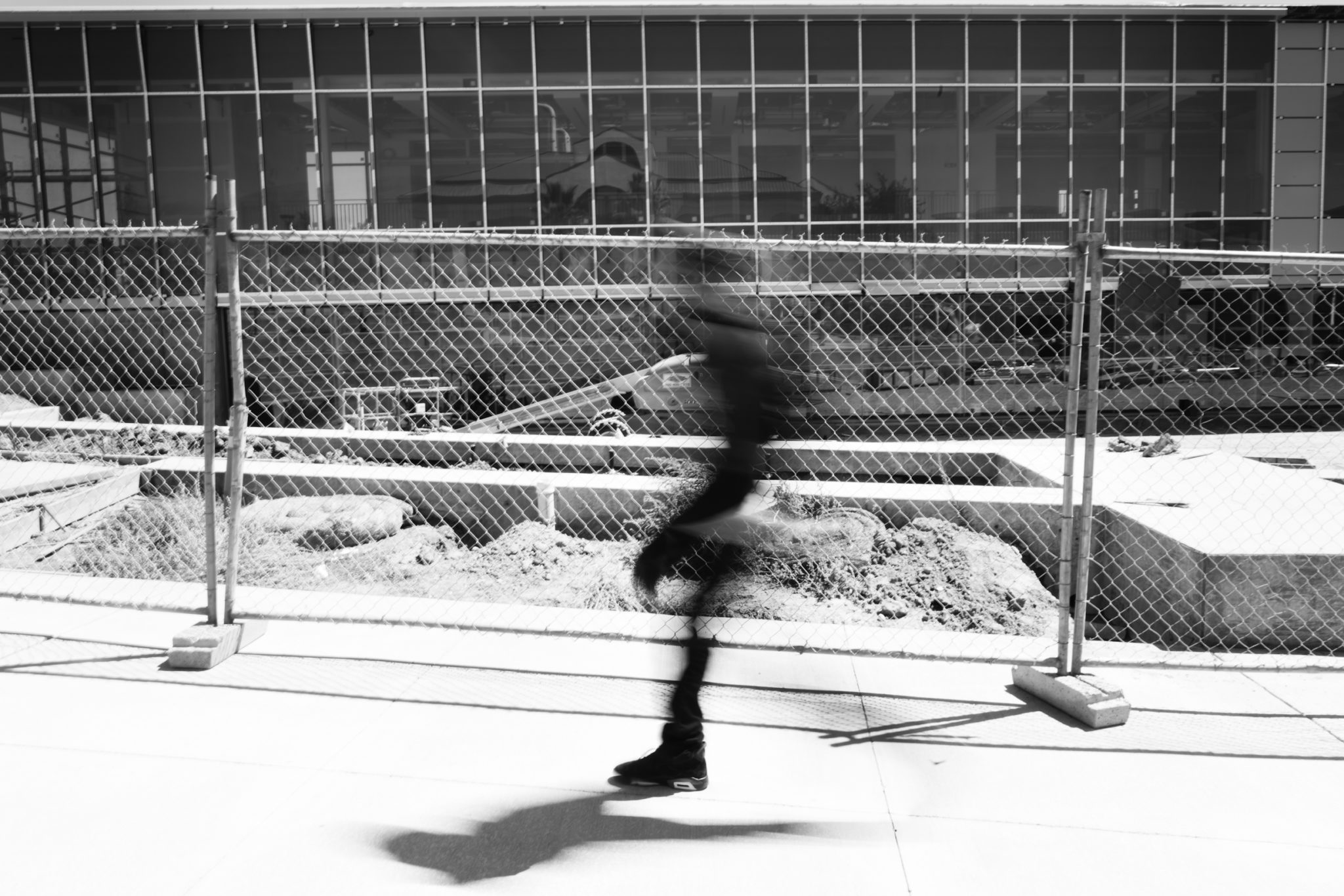On the brisk and cloudless evening of Jan. 31, a quiet but excited crowd of astronomy and physics enthusiasts huddled around telescopes. They gathered near the center of campus by the 1800 building, bundled up from the cold. The stars, the moon, and the passing comet had all been out teeming, so the community of Las Positas was out gleaming.
Meteorologists predicted Jan. 31 to be the last night that comet C/2022 E3 (ZTF), nicknamed the “Green Comet,” would be observable by telescope, and closest to Earth, before leaving the solar system forever. Clouds will likely obstruct observers over the next week and the comet is already getting dimmer. Thus the communities of the astronomy class, physics class, physics club and others gathered around to say goodbye to the interstellar traveler.
Dr. Jennifer Siders, LPC professor of physics, organized the viewing for students and club members with only the help of a few other professors and lab technicians. Students were gazing at the stars and the moon, but they were, most importantly, tracking the leaving comet.
“The period of this Comet is 53,000 years, so that’s why the headlines all said ‘oooh’ comet that no one has seen since the Neanderthals,” said Siders.
Not that the Neanderthals knew what was going on. Siders, along with most space enthusiasts, were wonderfully excited to see this mysterious object passing by. Comets are not the typical asteroid, explained Siders.
“A comet is just a snowball, it’s just an icy clunk of ice and gasses, and when it gets close to the sun those gasses start to burn off and you see that (bright light)”.
As the comet gets close to the sun, its microparticles and gasses begin to fly off in a long trail, unlike typical asteroids that have rocky surfaces. This made the comet uniquely bright.
“Its closest approach is tomorrow, it will be 26 million miles away, so it’s still really far away,” said Siders.
Scientists have a tough time knowing for sure exactly how bright or long they will be viewable, but they knew that the window to view comet C/2022 E3 (ZTF) was coming to a close.
Despite the comet not being visible to the naked eye, the “Green Comet” was still around 26 million miles away, said Siders, so observers can count themselves lucky for how close it got before making its exodus. It was certainly spectacular in its exit, like a Fourth of July send off.
Furthermore, the comet viewing of January 31st acted as a catalyst for the Las Positas community to get together in light of their education, interests and hobbies. Shreshth Sarin, a physics major and member of the physics club, was extremely fascinated by how the tail of the comet expanded over time.
“I’m super into astronomy and I never had the option to buy a telescope or look through it. I never really wanted to get into it, but [this opportunity] helps view things and explore things,” said Shreshth.
The primary telescope used the app “Unistellar” so each student could connect and see the sky simultaneously. Another app, “Nocturn,” was also used by the participants to take detailed images of the sky by mobile phone.

Even if students don’t typically have access to telescopes or other equipment, these clubs and classes offer the unique experience to use said equipment, with professional aid.
“It has been a lot of fun to meet new people, but also it’s been cool to actually apply what you are learning. When looking up at the sky you can say, ‘oh that’s Orien’s belt, oh that’s Taurus, or that’s the moon and its in this phase,’ so actually being able to see real world examples of what we’re learning has been the most cool part so far,” said Mikiah Aubert, a student in astronomy.
Using the sciences and information these students learned in their classes or clubs, they were able to apply that knowledge to their observations of the world around them, such as for the comet.. Having taken a few stem classes, Dylan McGrory, a sophomore student, said he was able to appreciate the fundamentally small, but important, mechanisms behind each aspect of the world around us.
“Looking at comets and stuff is cool, but it’s just that deeper understanding of how the world works, who we are as a people, and what our mission is to advance as a society. I think science is the most important thing, and the ‘final frontier’ as Startrek people would say,” said McGrory.
“Our astronomy lab gets to use this digital telescope [the one used for the image above] and we have a number of larger telescopes in the astronomy lab when conditions are good for observing we’ll go up on the roof and observe and they get to learn how to use the telescopes,” said Siders.
The astronomy lab requires a prerequisite class, but they get to go up to the roof and have that opportunity multiple times a week. Physics students also get involved in opportunities such as January 31st, but they also have a few unique opportunities.
“The physics club is a society of physics students, it’s a national organization we are a part of. We will be partaking in Science on Saturday. We are going to have demonstrations for the students that come for that talk, and the physics students will be running those,” said Siders.
Although, as Siders explained, that was likely the last time the “Green Comet” will be seen by the Las Positas community as it makes its way toward the edge of the solar system.
“It has been perturbed, and it is actually going to leave the solar system, so it’s never coming back. So this is the last view, and it’s going to get dimmer, it’s already getting dimmer,” said Siders.
Professors, students and faculty were made transient to the universe under the unreturning comet. There are only so many spectacles to behold in a lifetime, and Las Positas was lucky to be present for it.


